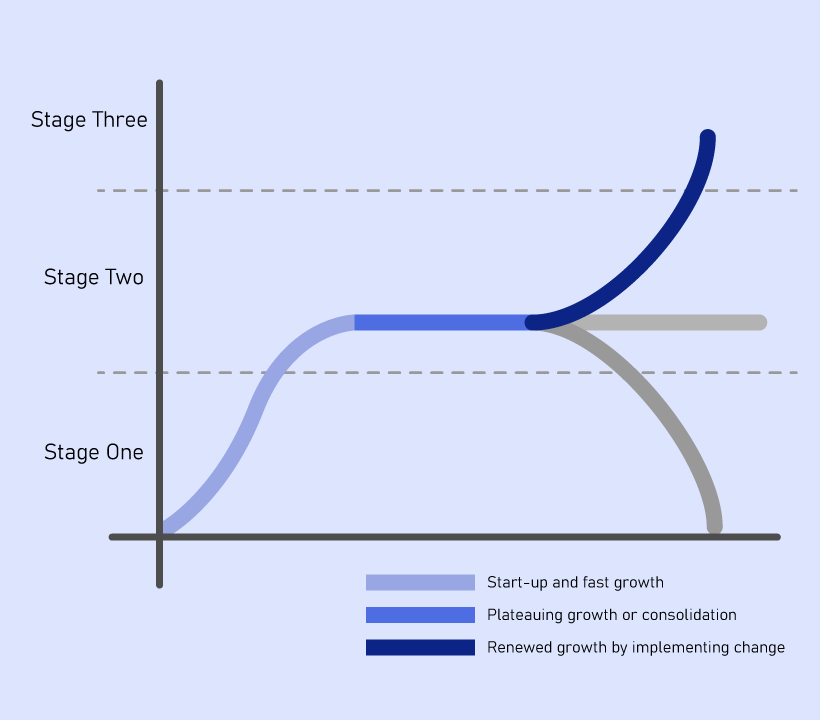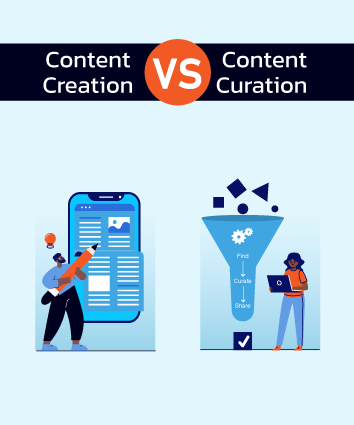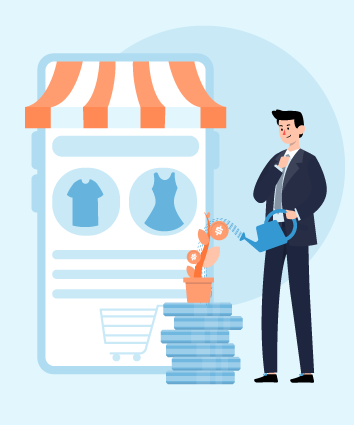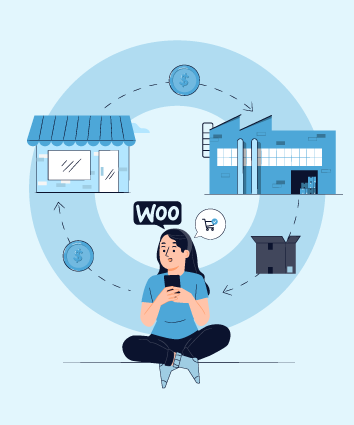
Businesses do not come in one size fits all. The same is valid for an eCommerce business life cycle. When you are into eCommerce website development, you must recognize the critical need of tailoring it to each stage of the business life cycle.
Before we jump on to the understanding of eCommerce development, let’s define it. It is the practice of doing business via the Internet. It is a necessary component of driving significant traffic to your online shop.
When the first lockdown happened, those business owners who had eCommerce stores did not face that many losses compared to those who had only a physical store. And this pandemic itself is proof that you need to start looking for eCommerce development services.
Gaining momentum and client recognition are the key goals of a new business in its early phases of development. Once they have accomplished this, their next objective will be to reach additional clients by expanding into new areas or developing novel revenue-generating strategies.
Before hiring an eCommerce development company and delving into the life cycle itself, it is critical to realize that your eCommerce SEO strategy should grow during its existence. It is normal for people to go through stages of their lives filled with ups and downs and tough times and accomplishments. Each phase may need significant adjustments to remain afloat and achieve progress.
Running a company is difficult enough, but if you do not make the required adjustments throughout each step of the eCommerce strategy life cycle, you may find yourself floundering or, worse, out of business entirely. Because of these very reasons, you need to appoint an eCommerce website development company.
Simplified eCommerce Lifecycle in 3 Stages
Change is inevitable and necessary to continue developing and adapting a critical first step. Being used to the concept of change will simplify the planning process for eCommerce website development, enabling you to tailor your approach to each phase of each eCommerce life cycle.
The study we’ve done at Eclipse has been condensed into three stages, which any eCommerce development company would agree with.
Stage 1 — Getting started and rapid expansion.
Stage 2: Growth has reached a standstill or has become more stable
Stage 3: Renewed growth as a result of integrating new technologies, platforms, resources, or personnel

Stage 1: Establishment and rapid expansion
The majority of eCommerce firms experience an initial phase of rapid eCommerce development and, in some instances, unexpected expansion. This is frequently due to the popularity of the products they offer or the demand for such products in the market, rather than the deployment of their eCommerce platforms.
Many firms will use e-commerce platforms such as WooCommerce, Shopify, or Magento to conduct their operations. It is critical for your company to be adaptable and fast to react to changes in the marketplace. And suppose you only want to focus on your core business activities and don’t want to overburden yourself; In that case, it is better to appoint an eCommerce development company.
Stage 2: Growth has reached a standstill or has become more stable
As a top-class eCommerce website development company, we have discovered that many companies that reach this second stage of the lifecycle tend to worry and hunt for quick-fix solutions to the perceived challenges they are experiencing.
Understanding that eCommerce development will naturally level down after the first flurry of activity is essential. Once your company has established traction, brand recognition, and early momentum, it is essential to take stock of your accomplishments, analyze your data, and obtain crucial insights that will allow you to make measured and smart improvements to your eCommerce website and marketing strategies.
Company owners must allocate sufficient time and money to study, systemize, and strategize to determine the most effective strategies for moving to the next level and beginning to achieve fresh growth.
Stage 3: The rebirth of growth
Previously, we said that many company owners believe that the answer to the problem of plateauing development lies in a fast repair or a sudden change of direction, which might include shifting to a new eCommerce platform or appointing an eCommerce website development firm or employing a new staff.
This is not always a strategic way of thinking about things. Changing platforms could be the best solution in certain cases. However, you must first develop a solid business case (which should include significant research and risk assessments) before deciding to move platforms.
Let’s say your company is at this point in the e-commerce lifecycle, stage three. In that case, your efforts to re-energize its momentum and development should always be strategic.
Analyses and research are critical for optimizing operations and enhancing customer service. This will serve as a guiding blueprint for creating your eCommerce strategy.
Even though research may disclose problems and the need to re-platform your organization, choices to incorporate technology and tools must be based on strong reasons.
EndNote
It is crucial to comprehend the lifecycle of eCommerce website development, which will help you discover crucial key questions at each stage. And it is highly needed for long-term success in the eCommerce business.
As a leading Digital Marketing agency, NFlow can create a secure and user-friendly system. For years, we’ve been developing e-commerce stores on numerous platforms such as WordPress, Magento, Shopify, etc.
We have a team of experts who can handle all of your brand’s functional needs and provide an online experience to boost traffic, consumer engagement, and return on investment.
To discuss more personalized eCommerce development services for your business, drop a mail at hello@nflowtech.com or call us on +91 9054331400.

Nevil Bhatt
Nevil is the owner of one of the fastest-growing digital marketing agency in India. Having a great knowledge of the IT field and business management, he decided to bring a revolution in the digital world by providing valuable and customised solutions across the globe. Whether it's real or digital, he knows how to handle sustainable relationships and meaningful interactions.




